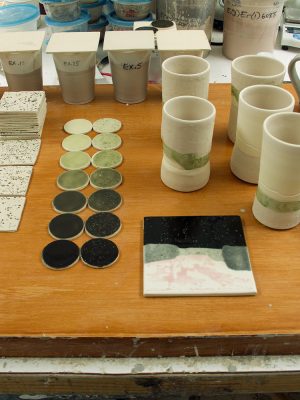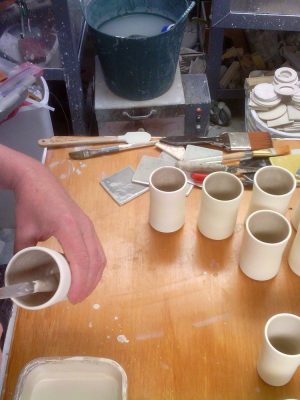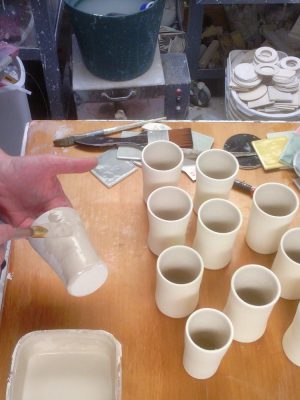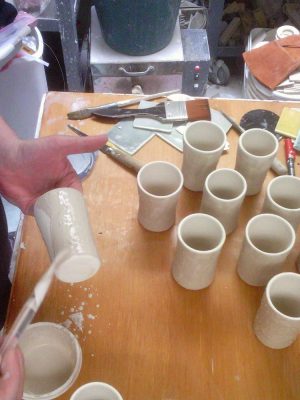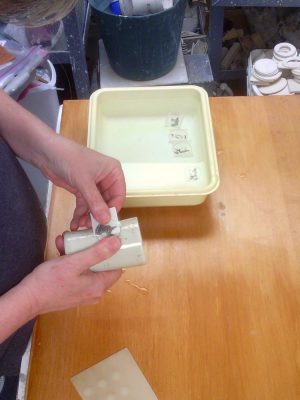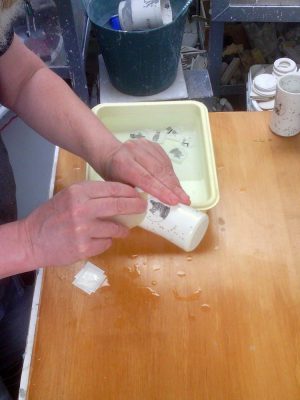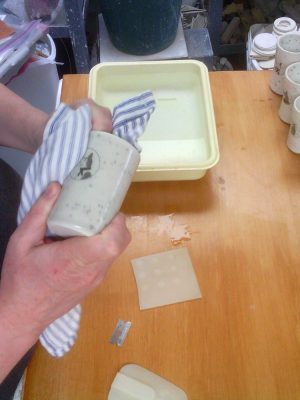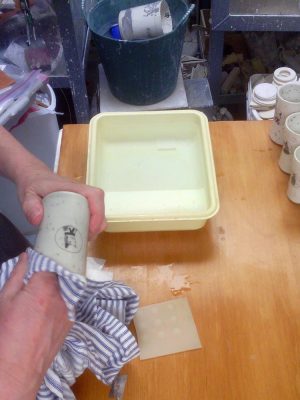A convergence of rotting glaze with a glut of used firing cookies inspired me to add to the growing stockpile of mosaic tile, a side project of the past seventeen years. I’ve been glazing the vitrified cookies instead of throwing them away since 2001. At last count, there were more than five hundred cd containers filled with an array of different glazes and colours. The raw material for some future projects.
It seems given the right conditions, even the good brushing media rots. Once it does, it looses its ability to be brushed evenly on a vertical surface. It retracts on itself instead of smoothing out as it dries. An added drop of Tea Tree oil should stop that from happening to the glazes mixed this week.
As I apply the glaze to these remaining forms, I am thinking about how to design the surface of the next round of mugs to maximize the illusion of depth. Land and riverscapes. From the curves and lines that need to be drawn into the freshly thrown forms to where each glaze falls on the grey scale to the mesh sizes of the polymer additives used, all the elements of the composition must work together.
I mixed the cobalt free black as a seven step grey scale from .03% to 2%. The green tone is a surprise. I was so sure from the brown it makes as a polymer that it would be the same here.
The sequence of glaze and decal application images show more of the process behind last week’s finished tumblers. The best decal squeegee I’ve found so far is a piece cut from a thrift store silicone trivet. It smooths the decal out better than those soft red ribs even. It’s important to polish off any water spots before firing else they become permanent.
A few more days of glazing remain. The last of the original elements has burned out in the upright kiln and needs to be replaced before anything can be fired. I’d best get to it if I want to be back behind the wheel by next week.

